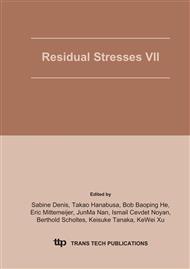p.28
p.29
p.35
p.41
p.47
p.53
p.62
p.67
p.73
Influence of Transformation Plasticity on Residual Stresses and Distortions due to the Heat Treatment of Steels with Different Carbon Content
Abstract:
The field of heat treatment of steels offers a large variety of applications for the use of simulation tools. It always includes the development of residual stresses and distortions. The geometry of the part, the composition of the material, the heat treatment process as well as the initial state of the part interact with each other in complex ways and have an influence on the distortion of the part. Using simulation the temporal development of temperature, phases, stresses and distortions while quenching as well as the residual stress distribution and distortion after quenching can be calculated. Transformation plasticity has been proved to be very important for heat treatment simulation. Three steels with identical contents of alloying elements but different carbon contents of 0.2, 0.5 and 0.8 wt. % were analysed. The influence of transformation plasticity during the martensitic transformation on the distortions and residual stresses after quenching of cylinders made out of the three steels was analyzed in simulations and compared to experimental results.
Info:
Periodical:
Pages:
47-52
Citation:
Online since:
July 2005
Price:
Сopyright:
© 2005 Trans Tech Publications Ltd. All Rights Reserved
Share:
Citation:


